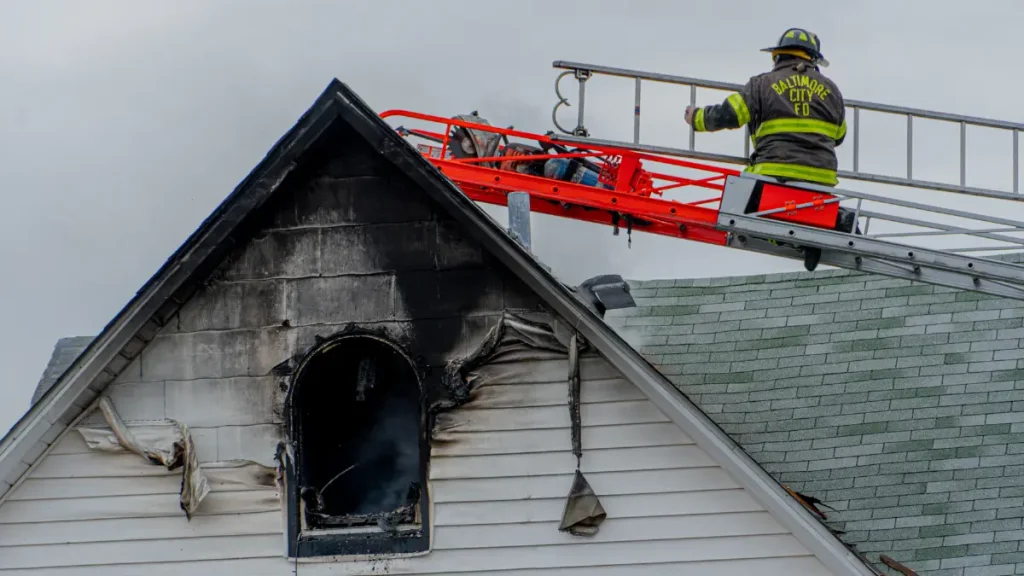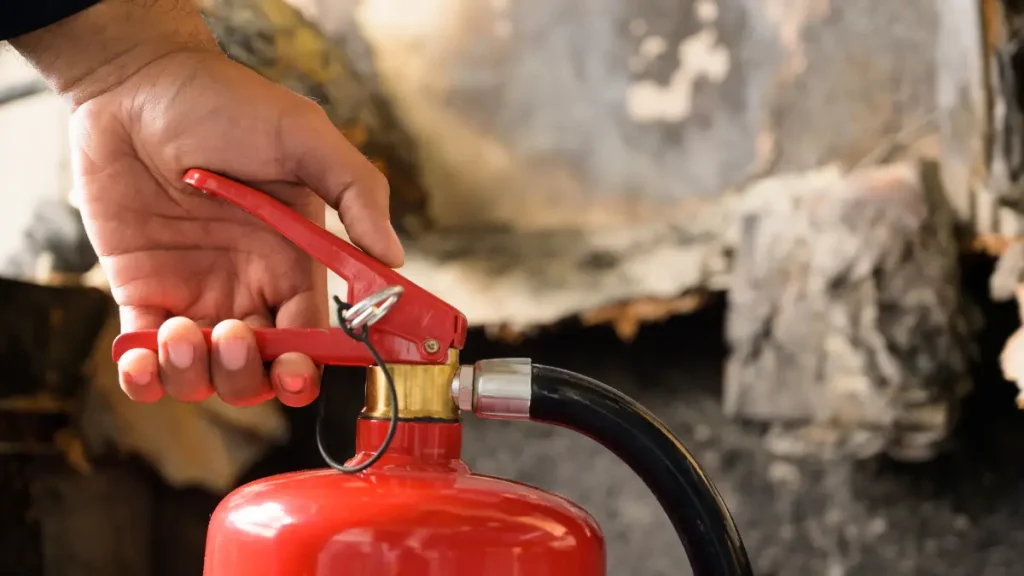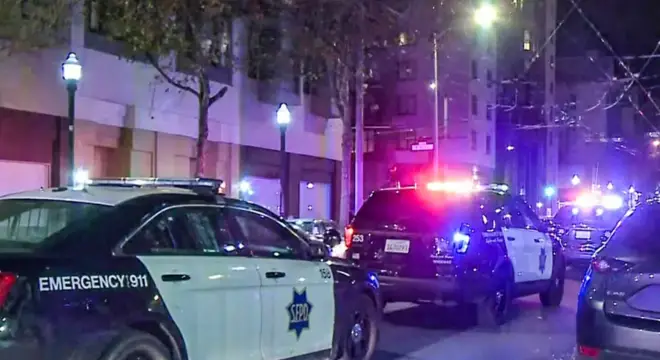New Jersey Firefighters Fight Blaze in Cherry Hill Home, Struggle With Heat Exhaustion
When I first saw the footage from Cherry Hill, it looked like the kind of fire you hope never hits your neighborhood. A two-story home on Webster Avenue went up in flames Monday afternoon, sending thick smoke into the air and dozens of first responders into action.
According to 6 ABC, the fire broke out around 11 PM. Four people were inside the home when it started. Thankfully, they all made it out safely. But what many people didn’t see was what happened after the fire was under control: three firefighters had to be pulled out and treated for heat exhaustion.
It wasn’t just a regular call. This fire went to a second alarm, which means crews from surrounding departments had to step in. It was hot, humid, and the fire had reached the attic — making the job even more dangerous.
Here’s the part most headlines skip over: heat exhaustion doesn’t just mean someone felt “a little off.” It’s your body shutting down under pressure. These firefighters were in full gear, dragging hoses, climbing ladders, and fighting through smoke — all while their core temperatures kept rising.
Cherry Hill Fire Chief Wade Houlihan said the home is likely a total loss. The cause is still under investigation, but one thing is clear: this wasn’t just about flames. It was about heat, stress, and the real toll these calls take on the people who show up for us.
Why This Fire Was So Tough to Fight?
If you’ve ever been outside on a hot, sticky day and felt wiped out after just a walk — imagine doing heavy labor in full fire gear, inside a smoke-filled attic.
That’s exactly what Cherry Hill firefighters were up against.
The blaze didn’t just burn; it trapped heat. According to Patch, the fire broke out in a two-story home and spread fast — triggering a second alarm and drawing multiple engine companies. But it wasn’t just the flames that pushed crews to the edge.
It was the humidity.
When the air’s already heavy, your body struggles to cool down. Add fire-resistant gear, oxygen tanks, and layers of protective clothing — and suddenly your internal temperature starts climbing fast. That’s where things get dangerous. One firefighter was taken to the hospital; two others were treated at the scene. These weren’t just minor “checkups” — they were signs of physical systems under serious strain.
And here’s something you might not realize: in these conditions, even 15–20 minutes inside a burning home can be too much.
Heat Exhaustion Isn’t Just Sweating Too Much — It’s a Real Medical Emergency

Let’s be real — “heat exhaustion” sounds almost mild. But it’s not. It’s your body waving a red flag.
When I say firefighters were pulled out because of heat exhaustion, I mean they were at risk of collapsing. Some symptoms can creep in quietly — dizziness, nausea, confusion. Others hit hard: pounding heart, blurred vision, even blackouts. And if it progresses to heat stroke? That’s life-threatening.
What hits me here is that these are trained professionals. They know their limits. They’re conditioned. So when three of them go down, that tells you just how extreme the conditions were.
It’s not about weakness — it’s about the body reaching a point where it simply can’t regulate itself anymore.
For anyone who’s ever wondered “Why do so many firefighters need to be on scene?” — this is why. When one crew’s core temp starts to spike, another needs to be ready to rotate in immediately. Lives depend on that rhythm.
How Firefighters Stay Safe When It’s Brutally Hot?
There’s a system in place called “fireground rehab,” and if you’re not familiar with it, it’s something worth understanding. Because when a fire like this hits your neighborhood, you want to know the people protecting your home are being protected, too.
Fireground rehab is more than just a water break. It’s a planned protocol where crews are rotated in and out — not just based on time, but on conditions. It’s where medics assess vitals, check for signs of overheating, and force rest even when adrenaline says “keep going.”
In Cherry Hill, crews used this exact system to monitor their team. One firefighter was sent to the hospital. Others were pulled, rested, and hydrated on-site. It’s this kind of discipline that prevents tragedies.
And you know what? It’s easy to take that for granted — until you realize that heat exhaustion is the second leading cause of firefighter injuries nationwide.
We’ve seen similar cases in other urban homes too — like the DC row house fire that forced a family to evacuate in peak heat earlier this year.
What Happens to the Families After a Fire Like This?
Let’s not forget the other side of this: the people who lost their home.
Four residents were inside when the fire started. Thankfully, they got out — but their house is likely a total loss, according to officials. That’s not just “property damage.” That’s photos, clothes, memories, years of their life — gone in minutes.
There’s no word yet on what caused the fire, but right now, those families are probably leaning on help from neighbors, the Red Cross, and maybe even sleeping in a hotel room tonight.
If you’ve never had to go through something like that, consider this your quiet reminder to check your smoke detectors, revisit your insurance coverage, and talk to your family about an emergency plan.
Fires don’t just affect the people inside the house. They ripple through an entire block, sometimes an entire town.
Just like the Montgomery County house fire that displaced a family of four last month, this too is a harsh reminder that recovery is not just about rebuilding walls — it’s about piecing lives back together.
3 Things You Can Do Today to Make Your Home Safer

Look, we don’t get to control everything — but when it comes to fire prevention, there are a few simple steps that make a huge difference.
Here’s what I recommend, especially if you live in New Jersey where older homes and humid summers can increase the risk:
- Check Every Smoke Detector Today
Not tomorrow. Not next week. Today. And don’t just check the test button — make sure the batteries are new and the unit is less than 10 years old. - Inspect Your Attic for Fire Hazards
Loose wiring, improper insulation, even stored chemicals — all of these can turn your attic into a danger zone. You don’t need to be an expert to spot trouble. Just take 15 minutes and look around. - Get a Fire Escape Plan in Place
If you had to get out right now, in the dark, would everyone in your home know where to go? Practice it. Once. That alone puts you ahead of most households.
You don’t need a firefighter’s uniform to act like a protector. You just need to take the small steps before a big one forces you to.
I also came across a local update alert that shared this incident way before the media picked it up.
If you’re into getting safety tips, local alerts, or early updates right on your phone, check out this WhatsApp feed that curates exactly that — quietly helpful, no noise.
Why Heat Exhaustion Cases Are Rising Across New Jersey?
This isn’t an isolated story. It’s part of a growing trend.
Over the past few summers, multiple towns in New Jersey have reported similar incidents — Passaic, Long Branch, Camden. In fact, just last year, five Long Branch firefighters were hospitalized after battling a house fire during a July heatwave.
And it’s not just anecdotal. Nationally, summer firefighter injuries spike every year. The NFPA reports that heat exhaustion is one of the leading non-trauma injuries on the fire ground.
Here’s what’s changing:
- Summer heat is arriving earlier and staying longer
- Humidity levels are spiking in Northeast states like NJ
- More homes are using older electrical systems under more load (AC, chargers, devices)
We can’t ignore that anymore. Fires aren’t just a winter hazard. They’re a year-round, all-conditions threat — and we need to start treating them like that.
Whether it’s a sudden fire like this one or something as devastating as the Philly explosion that destroyed multiple homes, one thing stays constant — communities need awareness before they need help.
What Happens Now — For the Firefighters and the Family?
The cause of the Cherry Hill fire is still under investigation. That means fire marshals will comb through the wreckage, looking for electrical issues, human error, or structural flaws. It could take days — or longer — for answers.
In the meantime, the displaced family will likely be getting support from disaster relief partners. And the injured firefighters? They’ll be resting, recovering, and probably itching to get back on duty — because that’s what they do.
But here’s what you can do:
- Share this story with someone you care about.
- Check your own fire risks this week.
- Thank a firefighter next time you see one.
These things matter more than you think.
Ever witnessed a fire in your neighborhood? Or know someone who went through it? Drop a comment — stories like these matter more when we talk about them.
Final Thoughts
It’s easy to scroll past fire headlines. We see them every week. But this one’s different — because it pulls back the curtain on what it really costs to protect a neighborhood.
You’ve got firefighters collapsing from heat. A family watching their home turn to ash. A community shaken awake.
And in all that chaos, there’s one clear takeaway: safety isn’t automatic. It’s built, every day, in small decisions — by them, and by us.
So let’s not wait for the next siren to take action.
If you want to read more real fire rescue stories and community safety updates, Visit our home incidents section — we keep it grounded, local, and always real.
Disclaimer: This article is based on publicly available reports and local news sources. Details about the fire and individual health outcomes are accurate as of publication. Always consult official fire department updates for the latest information.


